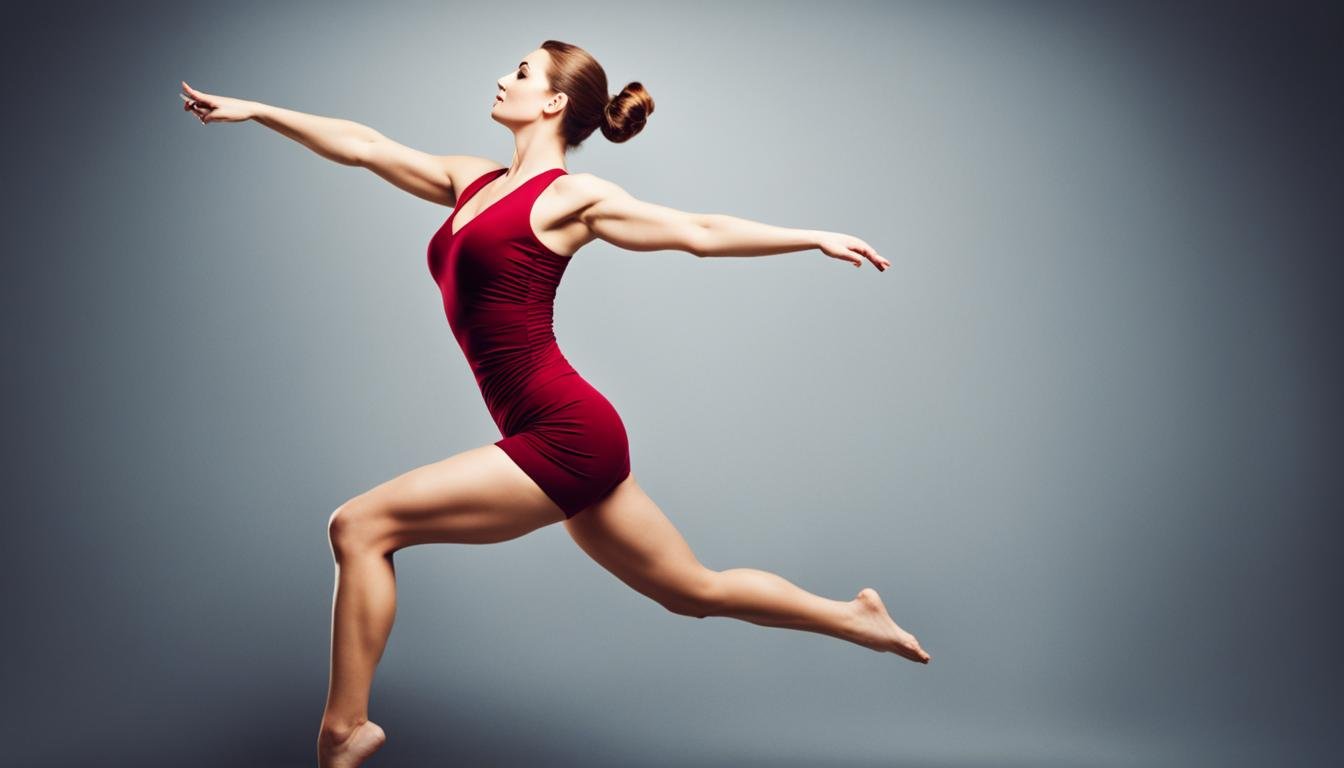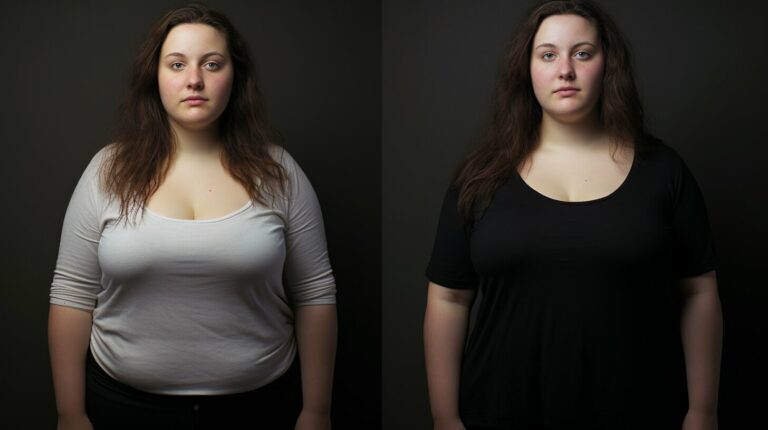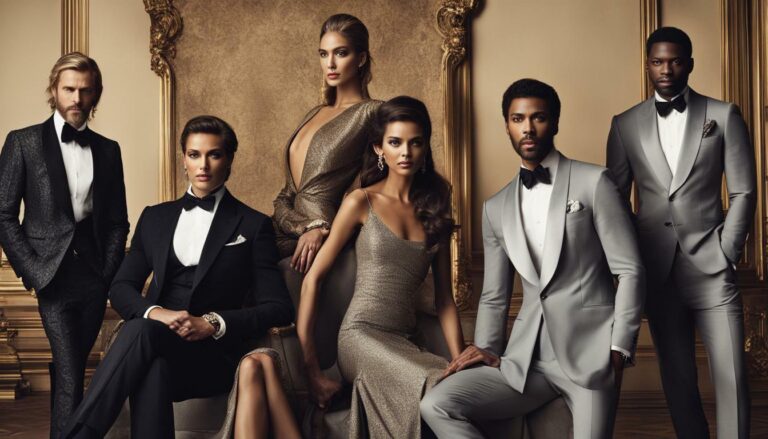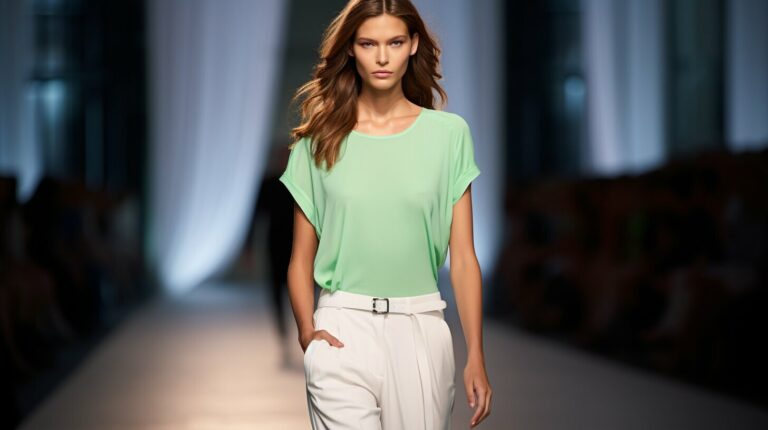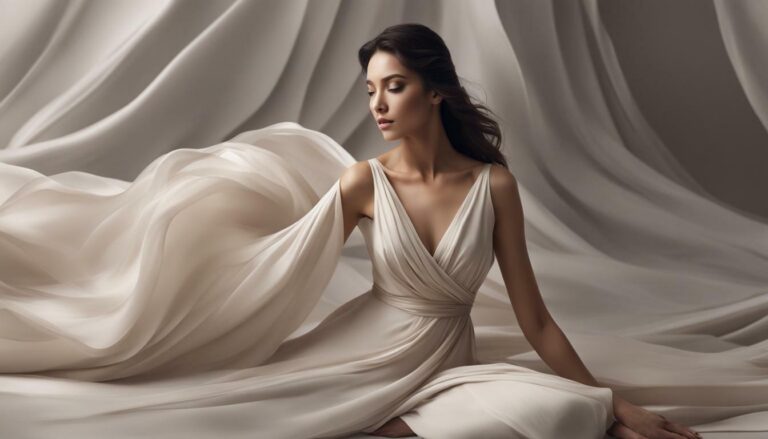Who Has the Most Attractive Body Shape?
When it comes to body shape, there’s no one-size-fits-all answer to what is considered attractive. Beauty standards vary across cultures and individuals, making it difficult to define an “ideal” body shape. However, there are certain factors that can contribute to a perception of attractiveness in both men and women.
Body measurements, proportions, and aesthetics all play a role in shaping our perception of an attractive body. However, it’s important to remember that beauty is subjective and personal. What one person finds attractive, another may not.
In this article, we’ll explore various factors that influence the perception of an attractive body shape, including muscle mass, body fat percentage, specific muscle groups, neck size, and the pressure of body image on men. By understanding these factors, we hope to shed some light on the complexities of body image and provide insights into embracing different body types.
Key Takeaways:
- Attractiveness in body shape is subjective and varies across cultures and individuals.
- Factors such as muscle mass, body fat percentage, and specific muscle groups can contribute to an attractive body shape.
- Neck size may have less impact on overall attractiveness compared to other factors.
- Men face increasing pressure to attain the “ideal” body shape, but confidence and other qualities also play important roles in attraction.
- Embracing and feeling confident in one’s own body shape is key to attractiveness.
The Ideal Proportions for Men’s Bodies
When it comes to men’s bodies, achieving the ideal proportions is key to maximizing attractiveness. While men often focus on building a muscular upper body, women tend to prefer a more balanced and athletic physique. It’s not just about having well-defined chest and arm muscles; a combination of physical features such as broader shoulders and a stronger butt also play an important role in creating an attractive body shape.
Women appreciate a harmonious balance of muscle mass and overall body composition. This means that putting too much emphasis on specific muscle groups may not be as important to women as achieving a well-proportioned physique. The aim is to create a body shape that looks visually appealing from head to toe.
A study conducted by a team of researchers found that women find men with wider shoulders and a narrower waist to be more attractive. This suggests that having broad shoulders not only adds to the overall aesthetic appeal but also gives the appearance of a more V-shaped body, which is a desirable feature in men.
Additionally, having a stronger and more defined butt can significantly enhance the attractiveness of a man’s physique. This is because a well-developed gluteal region contributes to overall proportion and balance.
To illustrate the desired proportions, here’s a comparison of ideal measurements based on height:
| Height | Ideal Shoulder-to-Waist Ratio |
|---|---|
| 5’6″ to 5’9″ | 1.6 to 1.9 |
| 5’10” to 6’2″ | 1.7 to 2.0 |
As seen in the table, the ideal shoulder-to-waist ratio varies based on height, emphasizing the importance of proportion and establishing balance in the body shape.
Remember, the key to an attractive body is not solely focused on isolated muscle groups but rather achieving a well-rounded and balanced physique. By focusing on overall proportion and balance, men can create an aesthetically pleasing body shape that is highly desired by women.
Now, let’s move on to the impact of body fat percentage on attractiveness in the next section.
The Impact of Body Fat Percentage
When it comes to physical attractiveness, body fat percentage plays a significant role in shaping our perceptions. Both men and women have their own preferences, and understanding these preferences can help individuals work towards achieving their ideal body shape.
Women generally find men with a lower body-fat percentage more attractive, especially those with a flat stomach or visible abs. However, it’s important to note that extremely low body-fat levels or obesity are not considered attractive by women. Men, on the other hand, tend to prefer a more extreme physique with well-defined abs.
Research suggests that the average body-fat percentage that women find attractive is around 13%. This indicates that having a lean and toned physique is often desired by women. Men, however, may strive for lower body-fat percentages to achieve the coveted six-pack abs that many find appealing.
It’s important to remember that body fat percentage alone does not determine attractiveness. Factors such as muscle tone, body proportions, and overall physique also contribute to an attractive body. It’s essential to focus on overall health and well-being rather than solely aiming for a specific body-fat percentage.
The impact of body fat percentage on attractiveness:
- Lower body-fat percentages are generally deemed more attractive by women.
- Visible abs are often considered a desirable attribute for men.
- The average body-fat percentage that women find attractive is around 13%.
- Men may strive for lower body-fat percentages to achieve well-defined abs.
“Having a lean and toned physique is often desired by women, while men may aim for lower body-fat percentages to achieve the coveted six-pack abs.”
It’s important to note that individual preferences may vary, and attractiveness is subjective. Embracing one’s body and striving for overall health and confidence are key in feeling and looking attractive.
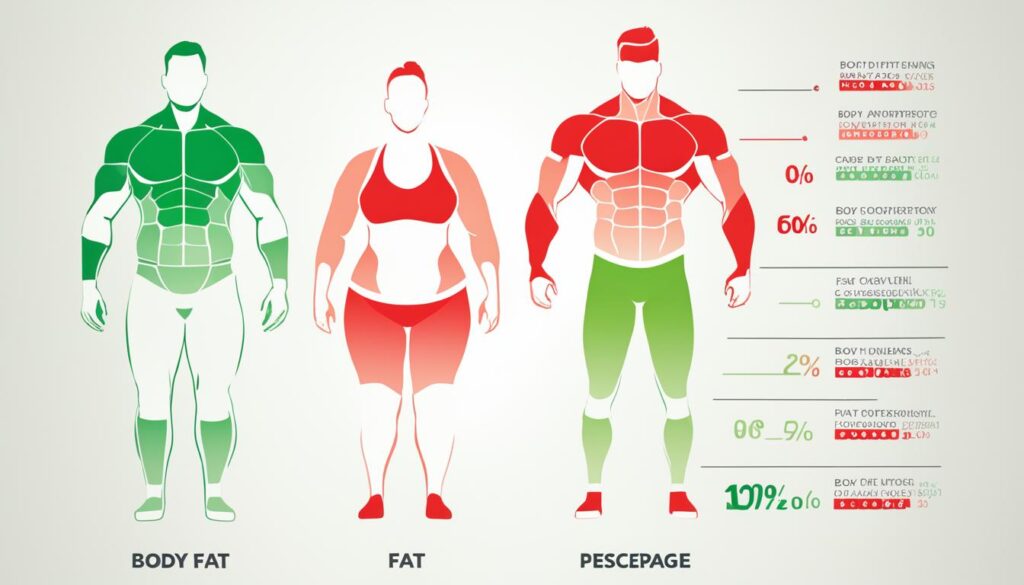
Having a healthy body fat percentage not only contributes to physical attractiveness but also has significant benefits for overall health. Maintaining a balanced diet, incorporating regular exercise, and prioritizing self-care can help individuals achieve their ideal body shape while promoting overall well-being.
The Muscles Women Find Most Attractive
When it comes to an attractive body shape, women have specific preferences for the muscles they find most appealing. While women appreciate a fit and toned physique, they tend to prefer a lesser degree of muscularity compared to men.
According to various studies, women find a combination of arm, chest, shoulder, and abdominal muscles to be the most attractive. These muscles contribute to an overall balanced and aesthetically pleasing body shape.
“Muscular arms and a defined chest are definitely eye-catching. It shows that a man takes care of his body and puts effort into staying fit,” says Sarah, a fitness enthusiast.”
However, the perception of “big” muscles differs between men and women. For women, the ideal arm size is closer to 14 inches, while men may consider arms as big at measurements around 15 or even 19 inches. Therefore, there is a disagreement between genders about how big those muscles should be to be considered attractive.
It’s important to note that there is no one-size-fits-all definition of an ideal body. Preferences for muscle size and shape can vary greatly among individuals and cultures. Women’s opinions on muscle size may vary depending on personal taste and body measurements of the individuals involved.
To emphasize the point, here is a comparative table illustrating the differences in perceived muscle size between men and women:
| Muscle Group | Perceived Size by Women (in inches) | Perceived Size by Men (in inches) |
|---|---|---|
| Arm muscles | Approximately 14 inches | 15 inches or more |
| Chest muscles | Natural shape and definition | Visible pectoral size |
| Shoulder muscles | Broad and defined | Prominently wide |
| Abdominal muscles | Slight definition | Visible six-pack abs |
It’s essential to remember that attractiveness is subjective and personal. While having attractive muscles can enhance one’s body shape, overall confidence and self-assurance are equally important factors that contribute to an attractive image.
Having a body of optimal proportions and an attractive physique is a goal for many men. However, it’s crucial to find a balance that aligns with your personal preferences and matches your unique body measurements. Embracing and feeling confident in your own body shape is key to presenting yourself attractively to others.
The Influence of Neck Size on Appearance
When considering attractiveness, neck size is a factor that is often overlooked. While other aspects such as muscle proportions and body fat percentage play a more significant role in overall appearance, there is some variation in preferences when it comes to neck size.
According to surveys, a majority of women tend to find men with athletic necks more attractive. A well-defined and muscular neck can enhance a man’s appearance and give a sense of strength and masculinity. However, it’s important to note that a significant percentage of women prefer men with thinner necks.
These preferences highlight the subjective nature of attractiveness and the diversity of body image ideals. While neck size can contribute to a person’s overall appearance, it may have less impact compared to other factors such as muscle definition and body proportions.
It’s essential to remember that body image and attractiveness are influenced by various factors, including cultural and personal preferences. Rather than fixating on a specific body part, it is more important to focus on maintaining a healthy lifestyle, building confidence, and embracing one’s unique body shape and size.
Key Takeaways:
- Neck size has some influence on appearance, but it is not the sole determinant of attractiveness.
- While a majority of women find men with athletic necks more attractive, a significant percentage prefer men with thinner necks.
- Other factors such as muscle proportions and body fat percentage play a more significant role in overall body image.
- Attractiveness is subjective and influenced by personal and cultural preferences.
- Embracing one’s unique body shape and size is essential for body confidence and overall well-being.
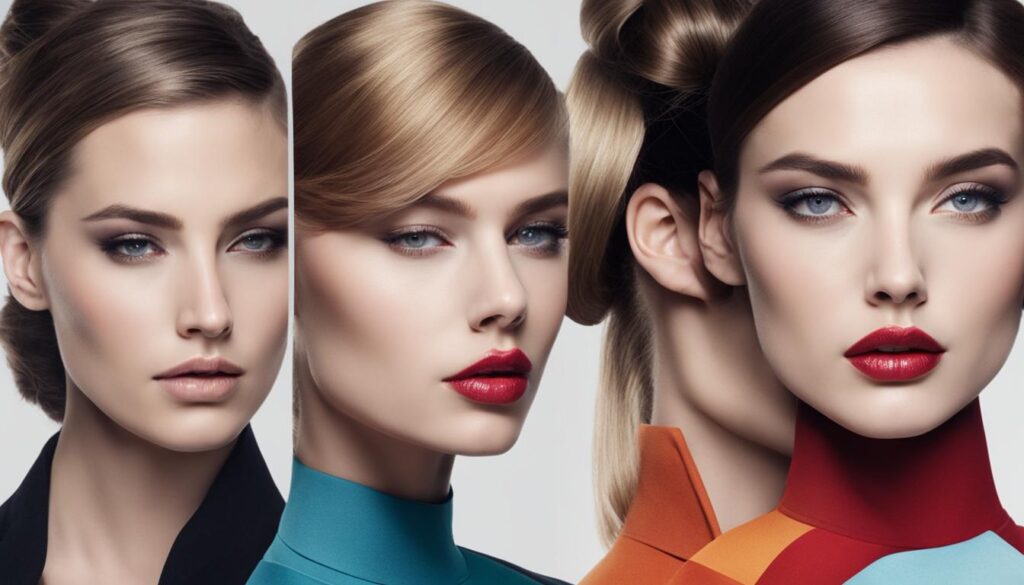
The Pressure of Body Image on Men
Men, particularly millennials, face increasing pressure to attain the “ultimate” and most desirable body shape. Society often promotes a specific ideal body shape for men, characterized by muscularity, defined abs, and a sculpted physique. This societal pressure can have a significant impact on men’s body image, self-confidence, and overall well-being.
The media plays a crucial role in perpetuating these ideals, with images of perfectly chiseled male bodies appearing in advertisements, movies, and magazines. These unrealistic portrayals create an unattainable standard that men feel compelled to achieve, leading to feelings of inadequacy and body dissatisfaction.
It is essential to recognize that women’s preferences when it comes to attractiveness and ideal body shape for men are diverse and multifaceted. While some women may find the stereotypical “gym body” appealing, many appreciate a combination of physical features and are attracted to qualities such as confidence, sense of humor, and authenticity.
“Women appreciate a man who is comfortable in his own skin, who radiates confidence and embraces his unique attributes. It’s not solely about physical appearance but encompasses the overall package that a man brings to the table,” says Dr. Emily Smith, a psychologist specializing in body image and relationships.
Body confidence is a crucial aspect of attracting a partner, and it goes beyond having a specific body shape or physique. Men who exude confidence and embrace their bodies tend to be more attractive and appealing to women. Therefore, focusing on building body confidence and self-acceptance can have a more significant impact on attracting a partner than solely pursuing an idealized body shape.
It’s important for men to understand that body image is subjective and personal. Striving for an “ideal” body shape may not necessarily lead to happiness or fulfillment. Instead, focusing on overall health, well-being, and self-care should take precedence over conforming to societal expectations.
As men navigate the pressure of body image, it is crucial to nurture a positive relationship with their bodies and promote body diversity. Embracing different body types and celebrating individuality creates a more inclusive society where men feel accepted and valued based on their unique attributes rather than their physical appearance alone.
The Impact of Body Confidence:
- Higher self-esteem and self-worth
- Improved mental well-being
- Increased resilience to societal pressures
- More fulfilling relationships
- Enhanced sense of overall happiness and contentment
Embracing Different Body Types
When it comes to body types, men are diverse, and there is beauty in every shape. Understanding and embracing your own body type is essential for building confidence and feeling attractive. Let’s explore the different male body types and how they contribute to an ideal body shape.
Ectomorphs: Lean and Slender
Ectomorphs tend to have a naturally lean and slender physique. They often have a fast metabolism, making it challenging to gain weight or muscle mass. However, their body shape is often associated with a youthful and athletic appearance.
Mesomorphs: Athletic and Muscular
Mesomorphs have an athletic build, with well-defined muscles and a relatively low body fat percentage. They typically have broader shoulders, narrower waists, and good overall muscle development. This body type is often considered the epitome of the ideal masculine physique.
Endomorphs: Rounder and Softer Physique
Endomorphs tend to have a higher body fat percentage and a rounded, softer physique. They have a natural predisposition to store fat and may have a more difficult time achieving a lean appearance. However, endomorphs often have a strong bone structure and can excel in activities that require more power and strength.
It’s important to note that these body types exist on a spectrum, and most individuals will not fit perfectly into one category. Each body type has its own unique characteristics, and the key is to optimize your fitness and nutrition plans based on your natural strengths.
While some may strive for a certain body type, it’s crucial to remember that attractiveness is subjective. Building an attractive body goes beyond specific measurements or body shape. Confidence, personality, and individuality play significant roles in overall appeal. Embracing and feeling confident in your own body type is the key to unlocking your attractiveness potential.
“Beauty begins the moment you decide to be yourself.” – Coco Chanel
Remember that true beauty comes from embracing and celebrating your unique qualities. By focusing on overall wellness and confidence, you can develop a body shape that not only looks attractive but makes you feel attractive as well.
| Body Type | Characteristics | Advantages |
|---|---|---|
| Ectomorphs | Lean and slender physique | Naturally athletic appearance |
| Mesomorphs | Athletic and muscular build | Well-defined muscles, broader shoulders |
| Endomorphs | Rounded and softer physique | Strong bone structure, power and strength |
Conclusion
When it comes to body shape and attractiveness, it’s important to recognize that beauty is subjective and personal. While there may be certain trends and preferences in society, there is no one-size-fits-all definition of an ideal body shape.
Instead, factors such as confidence, a sense of humor, and overall self-assurance greatly contribute to a man’s attractiveness. While physical appearance can play a role, it is not the sole determining factor. Women appreciate a combination of qualities, both internal and external.
Embracing and feeling confident in your own body shape is crucial. Remember that there is no single “perfect” body shape; it is about embracing your individuality and being comfortable in your own skin. Your self-confidence and body image are what exude attractiveness and draw others towards you.
FAQ
What is considered to be the most attractive body shape?
According to a survey of 423 women, the most attractive body shape for men is a balance between an athletic build and a strong build. Women prefer men with a moderate amount of muscle and a body-fat percentage around 13%. Other factors such as broad shoulders and a good bum also contribute to an attractive body shape.
Do women prefer men with lower body-fat percentages?
Yes, women tend to prefer men with a lower body-fat percentage, particularly those with a flat stomach or visible abs. However, they do not find extremely low body-fat levels or obesity attractive. The average body-fat percentage that women find attractive is around 13%.
What muscles do women find most attractive in men?
Women find a combination of arm, chest, shoulder, and abdominal muscles most attractive. However, they prefer a lesser degree of muscularity compared to men.
Does neck size impact overall appearance?
While a majority of women find men with athletic necks more attractive, a significant percentage prefer men with thinner necks. This suggests that neck size may have less impact on overall attractiveness compared to other factors such as muscle proportions and body-fat percentage.
How does the pressure of body image affect men?
Men, particularly millennials, face increasing pressure to attain the “ultimate” and most desirable body shape. However, studies show that women’s preferences are not solely focused on the stereotypical “gym body.” Factors such as confidence and sense of humor also play important roles in attraction.
Can men embrace different body types?
Yes, male body types vary and include ectomorphs (lean and slender), mesomorphs (athletic and muscular), and endomorphs (rounder and softer physique). Each body type has its own unique characteristics, and individuals can tailor their fitness and nutrition plans to optimize their natural strengths.
